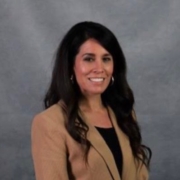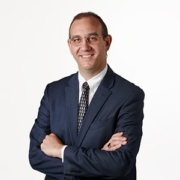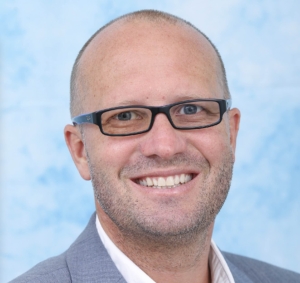Whole-School Physical Activity Programmes: A Culture of Well-Being
Dr. Aaron Beighle
Physical Educator, Professor, Author
University of Kentucky
School-based physical activity programmes offer a great foundation for building a culture of well-being. Much has been written about the importance of a wellness in schools, including its role in addressing physical, mental, emotional, and environmental health (WHO & UNESCO, 2021). Similarly, the evidence continues to mount regarding the impact of whole-school physical activity programmes on physical, mental, emotional and social health of the entire school community including students, faculty, parents, and stakeholders (Brusseau, Fairclough, and Lubans, 2020). It follows that whole-school physical activity programmes offer an ideal foundation to develop or solidify well-being in schools.
To best understand how physical activity serves as the foundation for well-being, it is important to quickly review the benefits of physical activity. The physical benefits of regular physical activity are well documented and established (USDHHS, 2018). These benefits include decreased chance of cardiovascular disease, lower blood pressure, and increased life expectancy. Physical activity can also provide social benefits such as personal growth, social integration, social change, leadership development, and empathy. The emotional benefits are less known but equally well documented. These include decreased anxiety, decreased depression, and lower levels of stress. In recent years, the cognitive benefits such as executive function, memory, focus, and problem solving.
Further, physical activity behaviours and experiences by nature offer endless authentic opportunities for conceptual learning. These concepts include relationship building, creativity, systems, and connections. For example, an afterschool adventure programmes offers an excellent opportunity to expose students to ecological systems while engaging in physical activity. Physical education lessons offer ample opportunities to address Social Emotional Learning. A simple task like finding a partner offers the chance to teach social awareness, respect, and empathy for others. Opportunities for teaching other concepts such as equity, diversity, inclusiveness, challenge, responsibility, and social skills present themselves regularly during physical activity. For all of these reasons it follows that “School-based physical activity programmess offer a great foundation for building a culture of well-being”.
Imagine the following scenario. It’s 7 am at The Berwin School. In the auxiliary gymnasium several faculty are engaged in an early morning beginners yoga class. Across the school, a group of students and faculty are learning traditional South American dances during a before-school multicultural activities programmes. The traditional school day starts with teachers greeting students and then leading groups in a five-minute “warm-up” for the day including stretching and movement in classrooms. During class time all students are afforded the opportunity to self-select breaks, including physical activity breaks, when they feel they are needed. Students learn to identify their personal signs of losing concentration or increased fidgetiness early in the year. Also, during the day some teachers use physical activity to teach concepts as needed. Recess is offered PreK-12. This is a time students select their own activities and often faculty engage with the students.
Early in the year, the physical education curriculum exposes students to the various activities possible during recess. This includes student governed “leagues” for non-traditional activities. Also at recess, a local company allows employees to serve as mentors and recess supervisors for students. Following the school-day the school is bustling with afterschool programmes including an adventure education/environmental education session for faculty and students lead by a local recreation organisation and an internal youth sports league for middle school students who do not wish to engage in competitive athletics.
Later in the evening, a year 3 literacy night is held with stations throughout the school. In the gymnasium, students guide their parents through that week’s physical education stations. Each station has instructional signs specifically designed in collaboration between the physical educators and the year 3 teachers to ensure alignment with classroom content related to literacy. Simultaneously, the high school basketball teams have their season opener in the high school gymnasium. And at 8 pm another physically active day at The Berwin School comes to a close. As this quick example demonstrates, the possibilities are truly endless with so many offerings to meet the needs of the entire community.
Globally, the role of schools in promoting physical activity and well-being are beginning to be recognised. Programmes in Bulgaria (BG Be Active), Ireland (Active School Flag), and the USA (CSPAP), to name a few, are working to develop this culture in schools. While the exact components of these programmes differ, in general these programs seek to provide a multi-faceted systematic approach to promoting physical activity. Components include physical education, school-day physical activity, out of school physical activity, staff involvement, and family/community engagement (CDC, 2019). Clearly these components are not new; however, a whole-school approach to physical activity is new in that it works to take these components from silos to a system designed to promote physical activity and whole-school well-being. While beyond the scope of this post to discuss the volumes of work associated with the components of whole-school approaches, below offers brief overviews of the components.
Physical Education: Physical education guides students on a journey of making physical activity an meaningful part of their lives (Pangrazi and Beighle, 2020). This includes learning psychomotor skills and strategies as traditionally thought of as physical education. But also, students learn about themselves. They learn what activities they enjoy, why they enjoy those activities, and how they can use activity to contribute to well-being. In addition, every lesson in physical education offers authentic learning experiences related to Social Emotional Learning, Equity, Diversity, Inclusion, and Social Justice to name a few.
During School Physical Activity: Recess is the portion of the day in which students select the activities they engage in usually on a playground, field or gymnasium. However, recess also offers an excellent opportunity for students to apply other concepts such as justice and empathy while engaged in activity. Classroom-based activity involves either engaging in physical activities designed to teach content through movement or providing physical activity breaks as a means of allow students to refocus. As mentioned in the above scenario this can be teacher lead or student selected and can take place in the classroom or in sensory rooms/hallways.
Out of School activity: As the name suggests this includes any activity outside of the school day. They key here is that the school is the central “hub” of the movement experiences. Examples includes after-school enrichment programmes, youth sports, clubs, leagues, and interscholastic sports.
Staff Engagement: Staff burn-out and well-being is central to whole-school well-being efforts. Thus providing staff what they want to improve well-being is essential. This approach also fosters staff engagement and increases sustainability. This can include staff classes, activity sessions, social events, or simple RAKE (Random Act of Kindness for Educators) throughout the year.
Family/Community Involvement: In many schools the families are the community. In other schools, local businesses and organizations are also involved. Regardless, this is an essential component of a well-rounded culture of well-being, particularly as it relates to physical activity. Family nights, family classes, open gyms, and open playground dates are just a few ways to incorporate families and communities in these well-being efforts.
School-based physical activity programmes offer a great foundation for building a culture of well-being. The possibilities for using physical activity as a tool for promoting well-being for everyone in a school community are endless. The beauty of this approach is that it can be tailored to the needs of each specific school, its students, its faculty, its families, and its community in their efforts to promote well-being for all.
Bibliography
World Health Organization and the United Nations Educational, Scientific and Cultural Organization; 2021. Making every school a health-promoting school: global standards and indicators for health-promoting schools and systems. Authors. Geneva.
Brusseau, T., Fairclough, S., and Lubans, D. (2020). The Routledge Handbook of Youth Physical Activity. Taylor & Francis. New York.
U.S. Department of Health and Human Service (2018) 2018 Physical Activity Guidelines Advisory Committee. 2018 Physical Activity Guidelines Advisory Committee Scientific Report. Authors. Washington, DC.
Centers for Disease Control and Prevention (2019). Increasing physical education and physical activity: A framework for schools. Authors. Atlanta.
Pangrazi, R. & Beighle, A. (2020). Dynamic physical education for elementary school children (19e). Human Kinetics, Champaign, IL.
ABOUT THE AUTHOR

Dr. Aaron Beighle is an internationally recognised scholar of physical education and school-based physical activity promotion at the University of Kentucky. Beighle regularly collaborates with schools and organizations interested in physical education as well as youth physical activity promotion. He has written more than 100 research-based and practical articles as well as six books, most notably Dynamic Physical Education for Elementary School Children. Aaron recently contributed to make the widely used lessons plans for this book available via dynamicpeasap.com. Dr. Beighle presents internationally on strategies for maximising the impact of physical education and other school-based physical activity promotion efforts.












